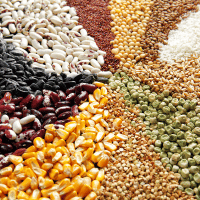Exploring the World of Grains: Nutritional Powerhouses
Grains are a staple in diets around the world, providing essential nutrients and energy. From ancient civilizations to modern kitchens, grains have played a vital role in human history and nutrition. In this blog post, we’ll dive into the types of grains, their health benefits, cooking tips, and current trends in grain consumption.
A Brief History of Grains
Grains have been cultivated for thousands of years, with evidence of their use dating back to ancient Mesopotamia. The domestication of grains like wheat, barley, and rice marked a significant shift in human civilization, leading to settled agriculture and the development of cities. Today, grains remain a cornerstone of diets globally, providing sustenance for billions.
Types of Grains
- Whole Grains: These grains contain all parts of the kernel—bran, germ, and endosperm—making them rich in nutrients. Examples include brown rice, quinoa, oats, and whole wheat.
- Refined Grains: These have been processed to remove the bran and germ, resulting in a lighter texture but lower nutritional value. Common refined grains include white rice and white bread.
- Ancient Grains: Often referred to as “super grains,” these include quinoa, farro, spelt, and amaranth. They are valued for their unique flavors and nutritional benefits.
- Gluten-Free Grains: For those with gluten sensitivities or celiac disease, options like rice, corn, millet, and buckwheat provide safe alternatives.
Health Benefits of Grains
- Nutrient-Rich: Grains are packed with vitamins, minerals, and antioxidants. Whole grains, in particular, are high in B vitamins, iron, magnesium, and fiber.
- Digestive Health: The fiber found in whole grains aids digestion, helps maintain a healthy weight, and reduces the risk of certain diseases, such as heart disease and diabetes.
- Sustained Energy: Grains are an excellent source of carbohydrates, providing the body with the energy needed for daily activities.
Cooking Tips for Grains
- Rinse Before Cooking: Rinsing grains like quinoa helps remove bitterness and enhances flavor.
- Soak for Texture: Soaking grains such as brown rice or farro can reduce cooking time and improve texture.
- Experiment with Cooking Methods: Try steaming, boiling, or even baking grains to discover new flavors and textures.
- Add Flavor: Cooking grains in broth or adding herbs and spices can elevate their taste and make meals more enjoyable.
Current Trends in Grain Consumption
- Plant-Based Diets: As more people shift to plant-based diets, grains are being celebrated for their versatility and nutrient density.
- Grain Bowls: These trendy meals combine various grains with vegetables, proteins, and sauces, offering a balanced and customizable dining experience.
- Sustainable Grains: There is a growing interest in sustainable grain farming practices, focusing on organic and regenerative agriculture.
- Functional Grains: Grains like quinoa and amaranth are being marketed for their health benefits, attracting health-conscious consumers.


